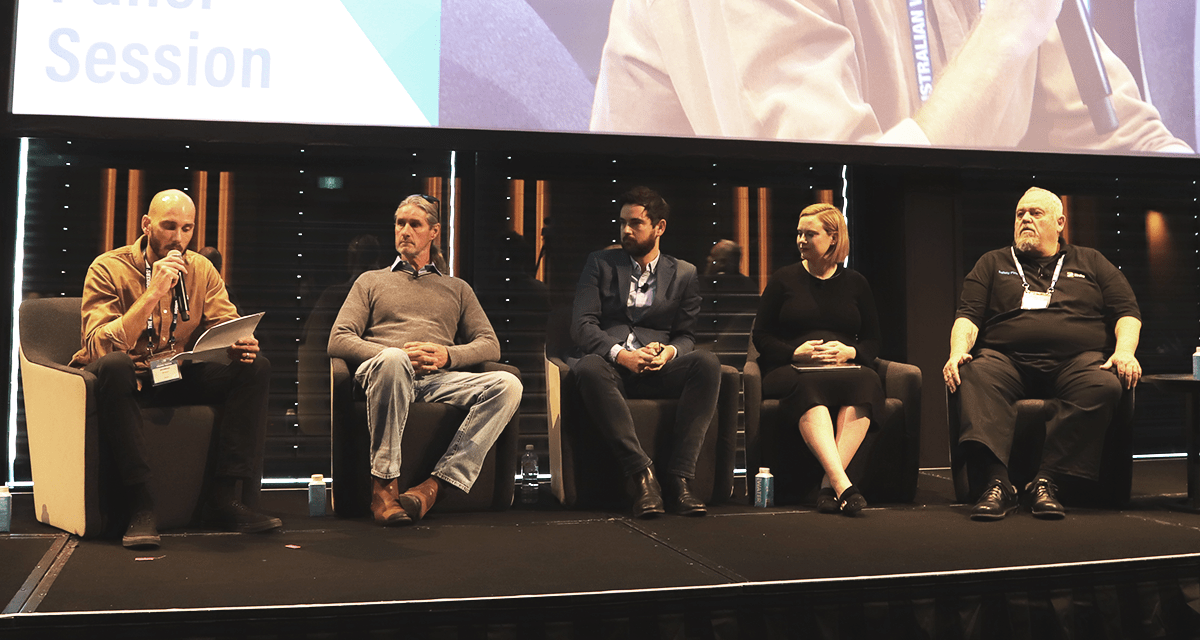The AWU has thrown its weight behind Australia’s burgeoning hydrogen industry with the release of a new report by the McKell Institute, which says Australia has an opportunity to be a global hydrogen powerhouse – but only if we act quickly.
The report’s release follows the passage of a resolution at the AWU National Conference calling on Australian governments to reject a narrow green-focused hydrogen agenda and instead prioritise the scaling-up of hydrogen this decade – irrespective of type –
While many industrial energy requirements can be met with renewable electricity, others such as the manufacture of steel, glass, concrete, fertiliser, ammonia, plastics and other key industrial products need fuel to be burned, or gas as a feed stock.
Hydrogen has been produced for decades as a chemical ingredient for industry, and interest has now turned to its use as an emissions-free fuel.
The McKell Institute report, ‘First Mover Moment’, observes that green hydrogen – which produces hydrogen from water with electrolysis – represents a major export opportunity for Australia. However, green hydrogen will not be produced at scale here until “well into the 2030s”.
 L-R: Zach Duncalfe (AWU Hydrogen Committee Chair), Trevor King (Jemena Delegate), Ed Cavanough – (McKell Institute) Alana Barlow (Sumitomo Australia) and Ashley Hartnell (Zinfra) discuss the future of Australian Hydrogen at the 2022 AWU National Conference.
L-R: Zach Duncalfe (AWU Hydrogen Committee Chair), Trevor King (Jemena Delegate), Ed Cavanough – (McKell Institute) Alana Barlow (Sumitomo Australia) and Ashley Hartnell (Zinfra) discuss the future of Australian Hydrogen at the 2022 AWU National Conference.
To make the most of this opportunity, it is essential Australia implements its plans for a future green hydrogen export economy. This ideal outcome can be made more certain by facilitating the timely development of the associated infrastructure, networks and customer bases required for this export economy. By developing scale, maximising hydrogen production, and ultimately driving down costs this decade, Australia can meet the moment and become a first mover in global markets for hydrogen, and the range of green manufactured goods it can produce.
With this in mind the conference resolved to:
- Recognise the need for alternative fuels to provide energy and feedstock to Australia’s industries.
- Recognise the global demand for hydrogen as a low-carbon fuel for industry, and Australia’s existing position as the world’s largest exporter of liquefied natural gas.
- Call on Australian governments to reject a narrow, green-focused hydrogen agenda, and instead prioritise scaling up hydrogen production this decade, irrespective of type, to maximise the opportunity for a clean hydrogen export economy in the 2030s and beyond.
AWU National Secretary Daniel Walton said that while green hydrogen was definitely the future, Australia could not afford to wait until it could be produced on the vast scale required to lay the groundwork for a domestic and export industry.
”There’s nothing wrong with green hydrogen,” he said. “But it’s also many, many years off being economic. We need to move much faster.
”It will be very easy to transition to green hydrogen when the time is right, but let’s not sit around waiting on a promise while our industries perish around us.”
Most hydrogen is generated from coal or natural gas, through a process of steam methane reforming. But burning these fuels emits carbon dioxide.
Two newer processes have emerged to cut these carbon emissions:
- Blue hydrogen, using carbon capture and storage to prevent carbon emissions from leaking into the atmosphere;
- Green hydrogen, using renewable energy to split water molecules into hydrogen and oxygen.
While both technologies are within reach, blue hydrogen generation can work with current hydrogen production technology and fit into the mature and established supply-chains of coal, oil and gas.
Several green hydrogen projects are on the drawing board, including a South Australian Labor Government commitment to build a 250MW electrolyser and 200MW hydrogen-fuelled power station in Whyalla. Simultaneously, several blue hydrogen projects are already underway.
BP at Kwinana and Viva Energy at Geelong are creating clean-energy hubs alongside existing refineries or fuel import terminals, using blue hydrogen to develop pathways for the industry.
And the Hydrogen Energy Supply Chain project, in collaboration with AGL, the CSIRO, and Japanese power company J-Power, has near-term plans to store CO2 in the LaTrobe Valley.
Mr Walton said it was essential for the nation to and in the process create thousands of skilled jobs.
“An export industry will require substantial new plant, equipment, infrastructure and skilled workers,” he said.
“AWU members already have enormous experience of dealing with oil and gas extraction, pipelines, and fuel refining, and as a result will be at the heart of this hydrogen revolution.”
The AWU National Conference also called on:
- Australian governments to explore ways to accelerate the use of hydrogen in existing industrial processes to support domestic renewable energy manufacturing.
- Governments, industry and workers to work together to establish a world-leading hydrogen equipment manufacturing industry.
- Governments to reserve a proportion of all hydrogen made in Australia to ensure that domestic industry has energy at affordable prices.
- All participants in the Australian hydrogen industry to recognise the opportunity to bring skilled workers, particularly from the oil and gas industry, into new forms of energy production, and ensure all workers in the hydrogen industry have their rights under industrial law upheld.

 L-R: Zach Duncalfe (AWU Hydrogen Committee Chair), Trevor King (Jemena Delegate), Ed Cavanough – (McKell Institute) Alana Barlow (Sumitomo Australia) and Ashley Hartnell (Zinfra) discuss the future of Australian Hydrogen at the 2022 AWU National Conference.
L-R: Zach Duncalfe (AWU Hydrogen Committee Chair), Trevor King (Jemena Delegate), Ed Cavanough – (McKell Institute) Alana Barlow (Sumitomo Australia) and Ashley Hartnell (Zinfra) discuss the future of Australian Hydrogen at the 2022 AWU National Conference.





